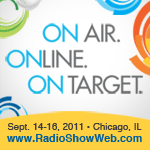
|
White Spaces Is Not Just About TV – It’s Also About The FCC is now putting the finishing touches on its rulemaking to allow unlicensed devices to operate on vacant TV channels or so-called “TV white spaces.” Yet those vacant TV channels are not always totally vacant. In fact, those frequencies are used by Part 74 low power auxiliary operations, such as wireless microphones, IFBs, and other systems used in news and program production by both TV and radio stations. As explained below, licensed low power auxiliary systems are entitled to interference protection from white space devices, but TV and radio broadcasters have to take action to ensure that these licensed operations are protected. While no white space devices or databases have received final approval yet, it’s not too soon for TV and radio stations to start the process of gathering information about how and where they use wireless microphones and other low power auxiliary operations. Stations should also inventory their wireless microphones and ensure that they are licensed and are operating only on frequencies between 54 MHz and 698 MHz (TV channels 2 to 51). In a separate action, the FCC required that all low power auxiliary operations in the 700 MHz band (TV channels 52 to 69) cease operation no later than June 12, 2010. Background. On September 23, 2010, the FCC adopted a Second Memorandum Opinion and Order that updated “the rules to make unused spectrum in the TV bands available for unlicensed broadband devices.” Unlicensed TV white space devices will use geo-location technology, such as GPS, to determine their location, and an FCC-approved TV Bands Device Database Administrator will identify the vacant TV channels that are available for their use at that location. The FCC conditionally designated nine entities – Comsearch; Frequency Finder Inc.; Google; KB Enterprises LLC and LS Telecom; Key Bridge Global; Neustar; Spectrum Bridge; Telecordia Technologies; and WSdb LLC – as TV bands device database administrators in January 2011. Microsoft has also applied to be a data base administrator, but the FCC has not yet approved its request. Microphone and Event Registration. Use of licensed low power auxiliary stations at “well-defined times and locations” may be registered in the database and receive protection. Under the FCC rules, registrations must include:
NAB staff is working with the FCC and TV bands device database administrators to make the wireless microphone registration process as simple and as quick as possible, such as allowing the simple registration of a large geographic area (for example, a stadium or golf course), and encouraging the database operators to update the database more frequently than every 24 hours (as required by the FCC rules), in order to provide protection for unplanned or breaking news events. You can find additional information at the FCC’s website. |
|
Old User Manuals/Documentation Needed for Lawsuit Challenging Broadcasters' Use of Hard Drives to Store and Broadcast Music A legal battle has been brewing between radio broadcasters and a company named Mission Abstract Data LLC, (doing business as DigiMedia). DigiMedia claims to have patents on a method and system for operating radio stations using a computer hard drive with a digital database of stored music that is programmed, played and broadcast. Radio broadcasters have already responded strongly to this challenge, saying that they have been playing music at stations from a hard drive since the early 1990s. Specifically, they note that SmartsBroadcasting ("SmartCaster"), Arrakis ("DigiLink"), MediaTouch ("MediaDisk"), RCS ("Master Control"), Enco ("DAD"), Digital Universe, DCS, Audisk, and a few others had such systems in place by 1992. To prove broadcasters were using such a system prior to DigiMedia's claim, attorneys representing broadcasters are trying to track down User Manuals or other documentation about such systems that pre-date the DigiMedia's filing date (its patent was filed on January 25, 1994). Some such materials already have been collected, but radio station operators are requested to check their file cabinets, bookshelves, libraries, etc., to see if any more of these old user manuals can be located. Materials from early 1993 or before would be the most helpful. If you do have any of these old materials, or have any further questions, please contact William Bradley at (202) 659-9076, or wbradley@roylance.com. FCC to Conduct Training for Consultants on Communications Towers and Environmental/Historic Preservation Compliance The Federal Communications Commission (FCC) is conducting a session for consultants on Tuesday, June 21, 2011 at its headquarters in Washington, DC on Communications Towers and Environmental/Historic Preservation Compliance. Training will be provided by staff from the FCC, USDA Rural Utilities Service, NTIA, FEMA and the Advisory Council on Historic Preservation. For additional information contact Steve DelSordo, and to register contact James Swartz, both at the FCC. To attend the session you must preregister. The 2011 Radio Show Engineering Program
The
Radio Show is jointly produced by NAB and the Radio Advertising
Bureau (RAB). The Radio Show will include an enhanced schedule
and expanded Radio Show Marketplace featuring exhibitor booths.
The show program will also include a complete session schedule
focusing on current issues impacting radio. Early bird registration,
a $200 savings over on-site registration, expires on July 3. The June 20, 2011 Radio TechCheck is also available in an Adobe Acrobat file. Please click here to read the Adobe Acrobat version of Radio TechCheck. |




